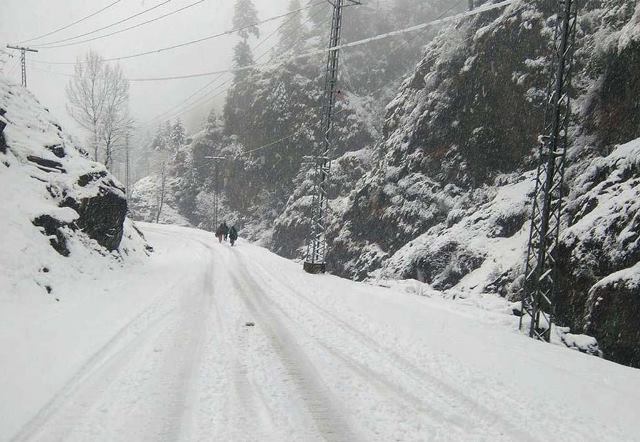Heavy rain and thunderstorms struck Peshawar and its surrounding regions early Wednesday morning, leading to significant street flooding and disruptions to daily activities. The downpour commenced around 6:30 AM and persisted for an hour, submerging numerous roads. Dark clouds continue to loom over the city, with reports of light drizzle and strong winds from the previous day.
Beyond Peshawar, areas such as Dir and Chitral have been experiencing continuous rain over the past two days. In Chitral, overnight snowfall has added a fresh layer to the mountainous terrain, reverting the region to winter-like conditions. Residents in Chitral, Dir, Swat, and other hilly areas have resorted to winter clothing due to the sudden temperature drop.
Humidity levels remain notably high across these regions, with Chitral at 100%, Dir at 93%, and Peshawar at 90%, intensifying the cold and damp atmosphere. The Pakistan Meteorological Department forecasts continued rain in Chitral, Dir, Malam Jabba, and Abbottabad until the weekend. Conversely, Bannu and Dera Ismail Khan are expected to experience clearer skies by Friday.
In Punjab, several districts are anticipated to receive light rain and breezy conditions over the next two days. Cities including Murree, Bahawalpur, Dera Ghazi Khan, Multan, Chakwal, Faisalabad, Sargodha, Lahore, Attock, Rawalpindi, Jhelum, and Sahiwal are projected to experience varying temperatures and rainfall. Humidity remains elevated in Multan (91%), Bahawalpur (75%), and Jhelum (73%), contributing to the prevailing weather conditions. By Friday, most cities are expected to witness clear skies with a temperature increase of 2 to 3 degrees Celsius.
In Lahore, temperatures are forecasted to range between 33°C and 35°C during the rainy period, rising to 35-37°C on Friday under sunny conditions. While the rain offers temporary relief, humidity levels at 71% maintain a warm and sticky environment. Meteorologists suggest that the scattered showers across Punjab may improve air quality and create a more pleasant atmosphere.
These weather patterns underscore the dynamic climatic conditions affecting various regions, prompting residents to stay informed and prepared for sudden changes.



Comments (0)
No comments yet. Be the first to comment!
Leave a Comment